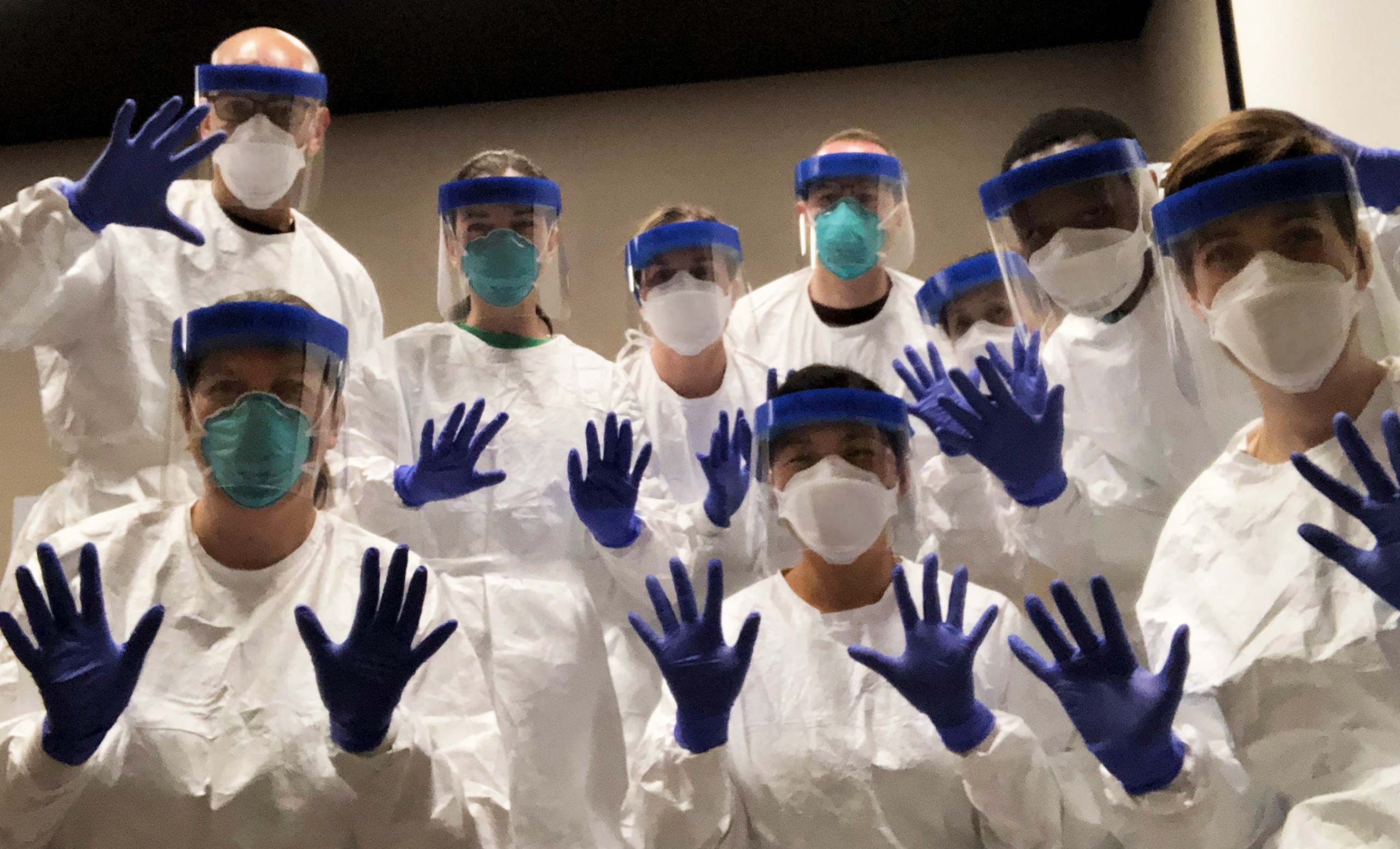Aquatics FAQs
Recommendations for Fully Vaccinated People
COVID-19 Homepage
Staying Safe in Emergency Shelters During COVID-19 Pandemic in Low Resource, Non-U.S. Settings
During or after natural disasters like hurricanes, typhoons, flooding, fires, and earthquakes, individuals and families may have to stay in emergency shelters. This means sharing living spaces and sanitary facilities, often in crowded conditions.
To limit the spread of COVID-19 in a shelter during a disaster, it is important for those running shelters to consider prevention early in the planning process. It’s also important for staff and residents to practice safe behaviors at all times.
Vaccines are the most effective way to keep you from getting and spreading the virus that causes COVID-19. They can also protect you from getting seriously ill and dying from the disease if you do get COVID-19. So, it is important to be vaccinated as soon as possible once it’s your turn.
Screen and Isolate
- Screeners should stand behind a physical barrier, such as a glass or plastic window.
- Screen everyone entering the shelter for symptoms of COVID-19, including a cough and fever of at least 38°C/100.4°F.
- Following medical screening, residents should be grouped as “not sick,” “sick,” and “requires immediate medical attention.”
- If a resident requires immediate medical attention, call emergency services for transport and, if applicable, tell the operator this person has a suspected case of COVID-19.
- Isolate residents and/or staff classified as “sick” with possible COVID-19. Move the resident to a separate room. If that is not possible, designate a separate isolation area for sick residents.
- Regardless of who appears sick or well, children and others requiring assistance should not be separated from caregivers. Breastfeeding/lactating women should not be separated from their infants.
Stay 2 Meters (or 6 feet) Apart
- Place groups or families in individual rooms or in separate areas of the shelter, if possible.
- Keep cots or beds of people from different households at least 2 meters (6 feet, or about 2 arm lengths) apart.
- Have residents sleep head-to-toe (alternating head and foot positions).
- Post signs with clear language and illustrations and provide physical cues, such as tape or chalk markings on floor to guide spacing.
- Restrict mass gatherings and mixing between groups of people staying in different rooms.
Wash Your Hands
- Wash your hands with soap and water for at least 20 seconds or use alcohol-based hand sanitizer and rub hands for 20 seconds.
- Wash/clean hands when entering and leaving shelter; after blowing your nose, sneezing, or coughing; before and after eating; after going to the bathroom; and if your hands are visibly dirty or greasy.
- Post signs in shelters encouraging residents to wash their hands.
- Provide handwashing stations or dispensers for alcohol-based hand sanitizer throughout shelter.
Wear A Mask or Face Covering
- Masks are particularly important when physical distancing is not possible, and people are indoors with poor ventilation.
- Shelter staff and occupants should wear masks at all times except when eating or showering.
- Wear the mask over your nose and mouth and secure it under your chin.
- Babies and children younger than 2 years of age should not wear masks.
- People who have trouble breathing or are unconscious, incapacitated, or unable to remove the face covering without assistance should not wear a mask.
Increase Ventilation & Air Flow
- Ensure ventilation systems are working properly, if available.
- Increase circulation of outdoor air within buildings by opening windows and doors and/or using fans.
- Shelters should be equipped with air exchange systems, when possible. Select upward airflow rotation if using ceiling fans to maintain good ventilation.
Clean and Disinfect
- Clean frequently touched surfaces (including railings, light switches, tables, doorknobs, toys, pens, pencils, toilets, sinks) twice a day or more if needed.
- Use household cleaner that contains soap or detergent to reduce the number of germs on surfaces. Use disinfecting chemicals, like bleach, to kill germs on surfaces. For example: mix 1 part or 20 ml of 5% bleach with 49 parts or 980 ml of water to make 1 liter of bleach solution.
- Disinfect to substantially inactivate the virus that causes COVID-19 and kill any remaining germs on surfaces to reduce the spread of disease or illness.
- Wear gloves for all cleaning and disinfecting activities.
- Additional personal protective equipment (for example, eye protection) might be needed based on the products/chemicals being used and whether there is a risk of splash.
This page is a general overview. Read more information on Emergency Shelters in Disaster Response in Global, Low Resource Settings.
